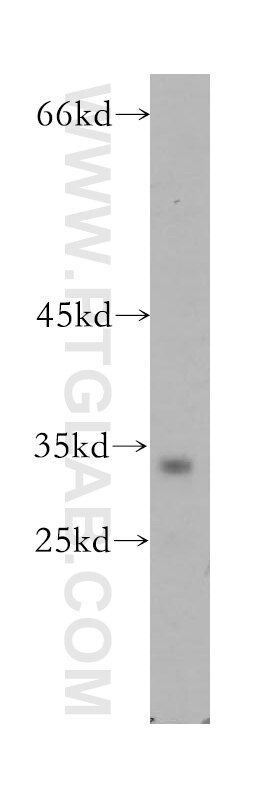TRAIL Polyclonal antibody
TRAIL Polyclonal Antibody for WB,ELISA
Host / Isotype
Rabbit / IgG
Reactivity
human
Applications
WB,ELISA
Conjugate
Unconjugated
Cat no : 10399-1-AP
Synonyms
Validation Data Gallery
Tested Applications
| Positive WB detected in | K-562 cells |
Recommended dilution
| Application | Dilution |
|---|---|
| Western Blot (WB) | WB : 1:300-1:600 |
| It is recommended that this reagent should be titrated in each testing system to obtain optimal results. | |
| Sample-dependent, Check data in validation data gallery. | |
Published Applications
| WB | See 1 publications below |
Product Information
10399-1-AP targets TRAIL in WB,ELISA applications and shows reactivity with human samples.
| Tested Reactivity | human |
| Cited Reactivity | human |
| Host / Isotype | Rabbit / IgG |
| Class | Polyclonal |
| Type | Antibody |
| Immunogen | TRAIL fusion protein Ag0627 |
| Full Name | tumor necrosis factor (ligand) superfamily, member 10 |
| Calculated Molecular Weight | 281 aa, 33 kDa |
| GenBank Accession Number | BC032722 |
| Gene Symbol | TNFSF10 |
| Gene ID (NCBI) | 8743 |
| Conjugate | Unconjugated |
| Form | Liquid |
| Purification Method | Antigen affinity purification |
| Storage Buffer | PBS with 0.02% sodium azide and 50% glycerol pH 7.3. |
| Storage Conditions | Store at -20°C. Stable for one year after shipment. Aliquoting is unnecessary for -20oC storage. 20ul sizes contain 0.1% BSA. |
Background Information
TRAIL is a 30 kD protein known as TNF-related apoptosis inducing ligand, CD253, TNFSF10, or Apo-2L. It is expressed as two kinds of forms: cell surface protein (30 kD) and soluble ligand (19-20 kD) produced by megakaryocytes and platelets, monocytes, neutrophils, NK cells and activated T cells. This antigen is also expressed on tumor cells and transformed cell lines. TRAIL has been reported to induce apoptosis in tumor and transformed cell lines by a caspase-dependent process.
Publications
| Species | Application | Title |
|---|---|---|
Technol Cancer Res Treat Nicotine Induces Progressive Properties of Lung Adenocarcinoma A549 Cells by Inhibiting Cystic Fibrosis Transmembrane Conductance Regulator (CFTR) Expression and Plasma Membrane Localization. |


